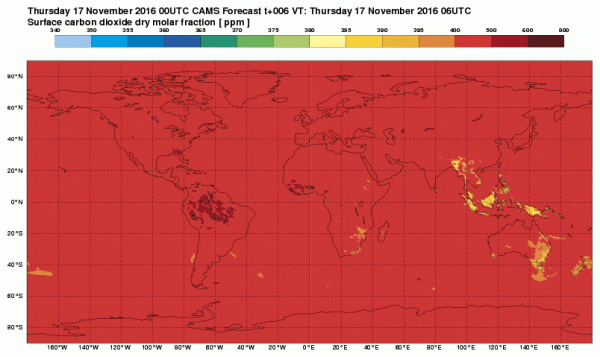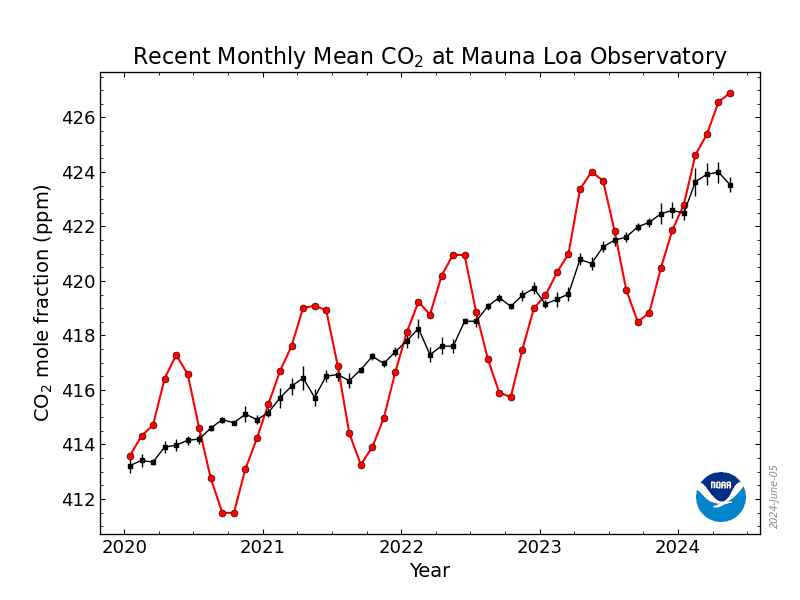ScienceRocks
Democrat all the way!
- Banned
- #1
Rates of Hothouse Gas Accumulation Continue to Spike as the Amazon Rainforest Bleeds Carbon
snip---
The Amazon as Surface Carbon Emissions Hot Spot

This is extremely bad news because if this becomes normal then huge carbon sinks are failing. In all likely hood this will swing back and forth but we will have to see.
.Back in June, atmospheric carbon monitors indicated that the Amazon Rainforest was leeching out more carbon dioxide than it was taking in. This is kind of a big deal — because the vast expanse of trees and vegetation in the Amazon represents a gift nature has given to us. For all that lush vegetation draws in a considerable amount of carbon dioxide and stores it in leaves, wood, bark and soil. And this draw-down, in its turn, considerably reduces the overall rate of atmospheric carbon accumulation coming from human fossil fuel burning.
Over the years and decades, this great service has saved the world from an even more rapid warming than it is presently experiencing. But not even the great forests could stand for long against the unprecedented plume of carbon coming from human fossil fuel industry. For the great belching of heat-trapping gas by all the world’s engines, furnaces, and fires is equal to about 4 or 5 of the Siberian flood basalts that triggered the worst hothouse extinction event in Earth’s deep history
snip---
The Amazon as Surface Carbon Emissions Hot Spot
Large equatorial forests like the Amazon are now producing hothouse gasses rather than taking them in. In the Copernicus Observatory’s surface CO2 measure, we find areas over the Amazon Rainforest where concentrations range between 500 and 800 parts per million — or up to nearly double the present average global atmospheric concentration.

(Very high surface CO2 concentrations over the Amazon Rainforest and West Africa are an indication that key global carbon sinks aren’t functioning. Instead, at least for the period of June through November of 2016, they appear to be emitting very high volumes of stored carbon back into the atmosphere. Image source: The Copernicus Observatory.)
Desertifying and drying forested regions of West Africa also show rather high localized surface CO2 spikes. And both areas are among those displaying highest total column atmospheric CO2 concentrations. According to NASA thermal monitoring, wildfires are also quite extensive in these zones. Meanwhile, the global drought monitor indicates that both the Amazon and West Africa have experienced exceptional drought, not only for the most recent year, but over the past 4 years through October of 2016. And it’s the combined drying and burning that is likely pumping all that carbon out of soils and forests.
Carbon Sink Transitioning to Source
During both 2005 and 2010, scientific studies found that the Amazon briefly lost its ability to act as a carbon sink. Now, it appears that another period of a loss of functioning of the ‘world’s lungs’ has occurred. But in this case, the Amazon, and parts of West Africa, appear to be consistently emitting carbon dioxide rather than taking it in.
It has long been a concern among climate scientists that human carbon emissions at the rate of nearly 50 billion tons of CO2 equivalent gasses each year would eventually harm the world’s forests, oceans, lands, glaciers and permafrost zones’ ability to take in that unprecedented carbon spike. And here we have at least some indication that this has happened, at least during 2016 and hopefully not extending over a longer period.
This is extremely bad news because if this becomes normal then huge carbon sinks are failing. In all likely hood this will swing back and forth but we will have to see.

